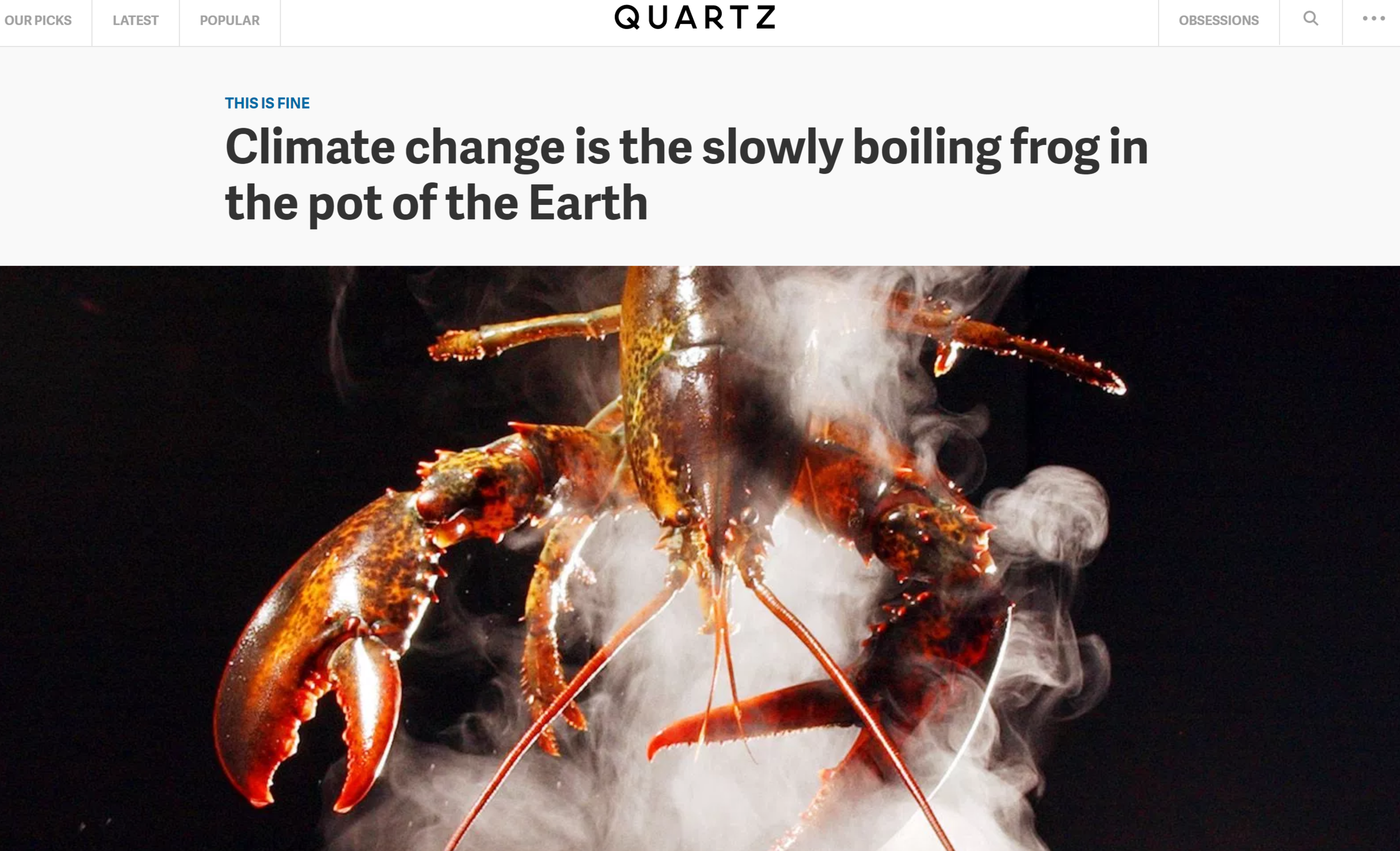Quartz: Climate change is the slowly boiling frog in the pot of the Earth

Imagine you just bumped into a friend you hadn’t seen in ages. Had they gained a little weight or gone gray? While you probably spotted some differences in their appearance, compare this to your workmate’s new haircut you didn’t notice last week, or how you didn’t realize how deep the lines under your partner’s eyes had become.
Differences tend to stand out more when there’s been a longer time lapse in between your last rendezvous. But when you hang out with a friend more frequently, your brain simply doesn’t notice the small changes that gradually happen with time.
Now imagine that your friend is climate change.
Since you hang out with them all the time, you don’t really notice when they’ve been getting a little warmer each year, or that their sea level is creeping up around their ankles. Because these changes are more gradual, your brain just doesn’t bother registering all the little bits. But those small shifts add up over time, and the resulting dramatic change often goes unnoticed. That is, until something big happens.
Change blindness and climate change
The human brain sees change differently depending on how it encounters it. This neurological glitch is called change blindness, and it’s one of the many cognitive biases that we all suffer from—except this one is standing in the way of humans actually doing something about our old friend climate change.
Change blindness describes why it’s so hard for humans to see change as it happens around us—especially if it’s gradual, and extra especially if we see it on a regular basis. As a result, dismissing or denying climate change has become a massive social norm in the US. This isn’t because we don’t believe it, but because we actually can’t see it. The only time our eyes are forced open is often when the big changes hit, such as hurricanes Sandy, Irma, and Harvey. When faced with the stark reality of a decimated Puerto Rico, a disappearing Florida, or a flooded Mumbai, the results become much more obvious.
It’s like that old adage about dropping a frog into a pot of boiling water. If you drop them in while it’s already hot, they’ll jump out as a survival instinct. But if you place them in room-temperature water and then heat it up nice and slow, the frog won’t notice the slow change, and it’ll be lulled it into a warm, sleepy death.
Now, just for fun, let’s replace that slowly heating frog water with the giant bodies of water we call oceans.
It’s the exact same scenario, except our oceans are the ones slowly boiling us alive. The sea has been getting around 0.13°F hotter every decade since the start of the 20th century, but we’re hardly noticing. The only time we realize we’re a little warm is when we take note of coral bleaching or ice caps melting, but these extreme events are only the visible tip of the (quickly disappearing) iceberg.
The reality is that there are lots of humans making lots of changes to the planet, and the “natural disasters” we are seeing more regularly are the result of these many small, indiscriminate actions adding up over time. Each individual event may seem insignificant in isolation—a policy shift to favor coal, a new road where a river used to be, some extra methane emissions from your local landfill—but all these incremental changes add up to a cumulative impact. Just as your old friend has grown bloated based on their lifestyle choices, so too has the planet.
Change is hard to see when it’s slow. Most people find change hard to comprehend in the first place—they ignore it, avoid it, and deny it, especially when it comes to risk—but it’s even harder to confront when they’re unable to see the gravity of the issue in the first place
